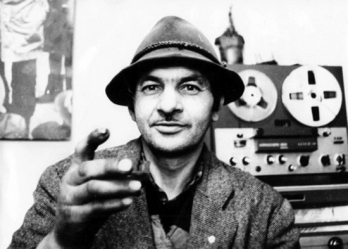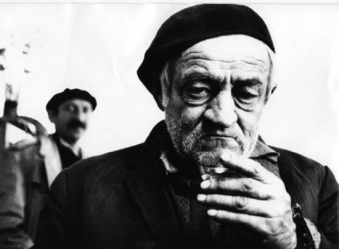Black Film seems to reveal—as does Žilnik’s Black Film Manifesto, [1] quoted above—the filmmaker’s heightened sense at that time of personal commitment to social change, expressed through his act of bringing home (to his wife’s dismay) half a dozen homeless men. This sense of personal responsibility and insistence on the right to ask questions went hand in hand with placing demands on Communist authorities, who, in the early 1970s, redoubled their efforts to institute “ideological unity” in the country, which Žilnik saw as a process of “redogmatising” society. [2] Facing censorship of his films, he left Yugoslavia for Germany in the mid-1970s, returning by the end of the decade to go on to a successful career in both television and film.
Perhaps most remarkable about Black Film is its open-endedness—according to Žilnik, the idea for the film came together the day before shooting began, and the end of the film reveals no solutions to the problem of homelessness. Practically, this was possible because of the Neoplanta Film Studio, a remarkable state-funded alternative space that was run as a cooperative and enabled filmmakers to work on short films in a truly experimental mode.[3] Žilnik was one of the studio’s earliest participating documentarians, as was Karpo Godina, who served as the cameraman on Black Film (as well as several other films directed by Žilnik) and whose own directorial experiments, such as Litany of Happy People), also pushed the documentary form in new directions. Yet another example of Neoplanta’s output can be found in the present series in the film White People, which was produced by the OHO artist group.
Conceptually, as Žilnik has explained at a Flaherty NYC screening of his films, Black Film took the form it did in recognition of the “questions of manipulation [that] are . . . inherent in the film medium,” a concern in response to which he experimented with the total transparency of the creative process in Black Film. Because of this, according to Žilnik, Black Film “was hated not only by the media and some politicians, but also by his colleagues who accused the film of opening too much in terms of discussion and the social order, and revealing too much of the hidden side of the filmmaking profession.” For his part, to stress that he was, indeed, critiquing his profession, Žilnik included at the end of the film a “proclamation” that “the film is about the position of filmmakers and intellectuals, who although they pretend that they are changing the society and helping people, are actually not doing anything but making films.”[4] Judging by the subject matter of his most recent film, Žilnik continues to this day to struggle with the questions of how art might best intervene in politics. — Ksenya Gurshtein
With thanks to Želimir Žilnik, Sarita Matijevic, and Sarie Horowitz at the Flaherty Seminar for their assistance with research and for making a screening of this film possible in Washington.


